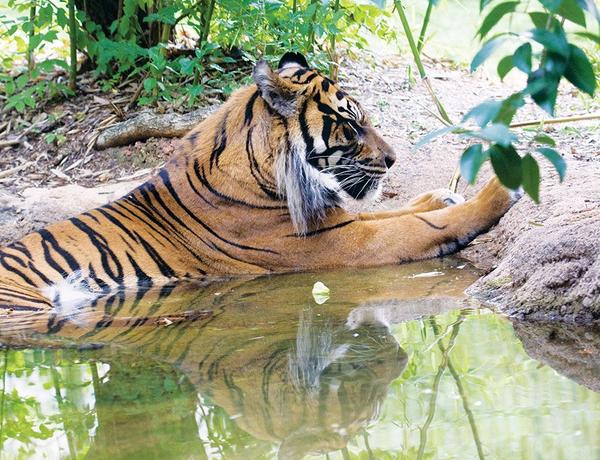Now researchers at the University of Georgia are hoping to insure against the ultimate loss of these animals through stem cell research. Assistant Professor Franklin West with UGA’s Regenerative Bioscience Center is heading up the effort.
The big cats are not just at risk from destruction of their habitat. West said during an interview on “A Closer Look” that disease is a major issue too. “One of the best examples happened in Amboseli National Park in Kenya where distemper from the dog population actually jumped from the lions themselves and killed about a third of the lion pride.”
West said stem cells could play an important role in preventing this kind of transmission.
“One potential way that you can use stem cells is you can actually take a stem cell created from a lion and then you could actually introduce a gene that will make it resistant to things like distemper or parvo or other conditions,” he said. West and his team are focusing on the Sumatran tiger and clouded leopard in their stem cell research.
“We picked these two big cats because, one, they’re absolutely beautiful,” he said. “The second thing is we know a lot about cat biology – reproductive biology – and so the idea of this project is that we’re going to be able to take a skin cell from a big cat, be able to turn it into a stem cell by introducing four or five genes and then take those stem cells, turn it into sperm, and then be able to use it in artificial insemination in breeding programs,” West explained.
West said the technique used for creating stem cells from the big cats has other applications as well – including for strokes and traumatic brain injuries. The university has launched a crowd-funding campaign to pay for the research on Sumatran tigers and clouded leopards.
WABE’s April Williams, Rose Scott, and Denis O’Hayer contributed to this story.
source



No comments:
Post a Comment